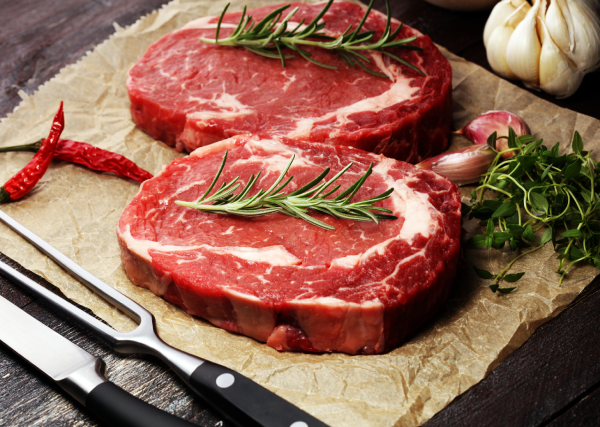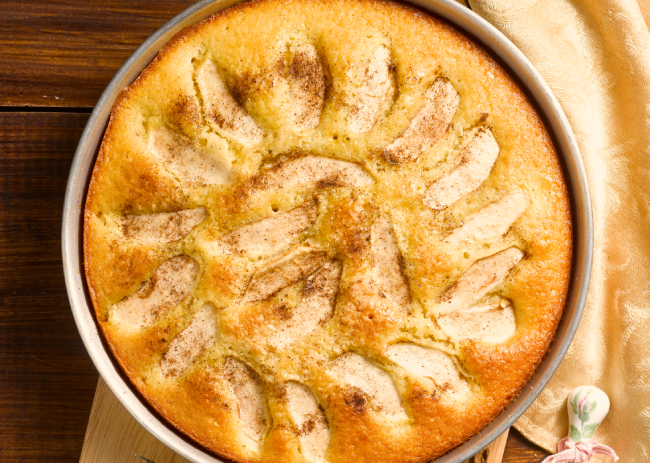Dry Aged Bourbon Steak
Feast your eyes on this dry-aged bourbon steak recipe. Succulent high-quality dry-aged steak in a sweet and sticky bourbon marinade. You can cook it on the cast iron, grill or even the BBQ. This recipe serves 4 but feel free to double up the ingredients if you have guests. If you want to find out the history of dry ageing, read past our recipe to find out where it all began.
Dry Aged Bourbon Steak
Ingredients:
Ribeye Steaks (dry-aged)
Salt and Pepper
Rosemary
4 garlic cloves
1/3 cup of mustard
1 tablespoon of oil
1 tablespoon of brown sugar
⅔ cup of Bourbon Whiskey
1 lemon
Tools:
Cast iron/ Grill/ BBQ
Sheet Pan with rack
Method:
First of all, before you get started, it is important to remember that this recipe involves dry-age steaks. You can make dry-aged steak at home but if doing so, we recommend using a separate fridge dedicated to the dry-ageing process of your meat. This is to avoid cross-contamination of flavours between your dry ageing meat and usual fresh fridge goods.
Step 1:
Dry age your steak for your desired time scale, we suggest a minimum of 21 days to start evoking some really unique flavours from your meat. Our favourite is a 45-day dry-aged steak due to the umami tastes and succulent texture.
If you are looking for a high-quality dry-age refrigerator, the one we use is by Steak Locker who is a dry-ageing expert. Their fridges use SMART technology to monitor the temperature and humidity of the fridge and the steaks to minimise any risks of spoilage that can come with the dry-ageing process.
Step 2:
Season your steaks using salt and pepper. Using a large bowl, mix the crushed garlic and mustard, then place the steaks on a plate and cover with the mixture making sure both sides are covered. Let them stand for 30 minutes to absorb the marinade and flavours.
Step 3:
Heat up a skillet (if that is the method you are going for) using medium-high heat, adding oil to cover the pan. Fry the steaks until golden brown- this usually takes around 5 minutes. Flip the steaks and repeat the process but only for around 2 minutes, then remove the steaks and cover in foil so they remain warm.
Step 4:
Keeping the pan on medium-high heat, stir in the rosemary and bourbon to the existing mustard and garlic sauce. Next, add the brown sugar and sliced lemon simmering the mixture for about 2 minutes.
Step 5:
Finally, finish the steaks with the sticky bourbon mixture and serve.
History of Dry-Ageing
Dry-ageing is a preservation method that dates back as far as the middle ages. Back in those days, it was the only way to stop the meat from spoiling after a few days. Before fridges were introduced in the 1940s, people often used cellars and even caves to store and preserve meat. This is because typically these areas keep a steady cool temperature and humidity- ideal for dry ageing.
The technique of dry ageing is unique because it has the ability to change the flavour and tenderness of beef without the addition of any other herbs, spices or ingredients. However, due to the length of time, it takes to dry-age meat, nowadays wet age is a popular choice for meat suppliers.
Generally, when you purchase grocery store steaks they come in vacuum-sealed plastic, kept fresh by a technique called wet ageing. The downside of this method is that it prevents your meat from tasting as good as it could taste. Wet ageing evokes a more metallic flavour that lacks depth. Dry ageing provides the opportunity to have an intense flavour from your steak with notes of nuttiness and blue cheese.
The debate between which preservation method better continues between foodies. The difference is that dry ageing has centuries of tradition supporting it. Now with the development of technology, fridges allow you to easily dry age steak from the comfort of your own home. One unique brand that has created a whole fridge range dedicated to the dry-ageing process is Steak Locker. Their fridges use the world’s first smart technology to precisely age your meat by monitoring the temperature and humidity levels to ensure you achieve the best results.
Summary
We hope this F and B recipes article has helped give you an insight into the endless possibilities of dry ageing. We love this bourbon steak recipe and can’t wait for you to try it and see how amazing it is. The question is, will you be trying dry-aged meat or stick to wet aged?



